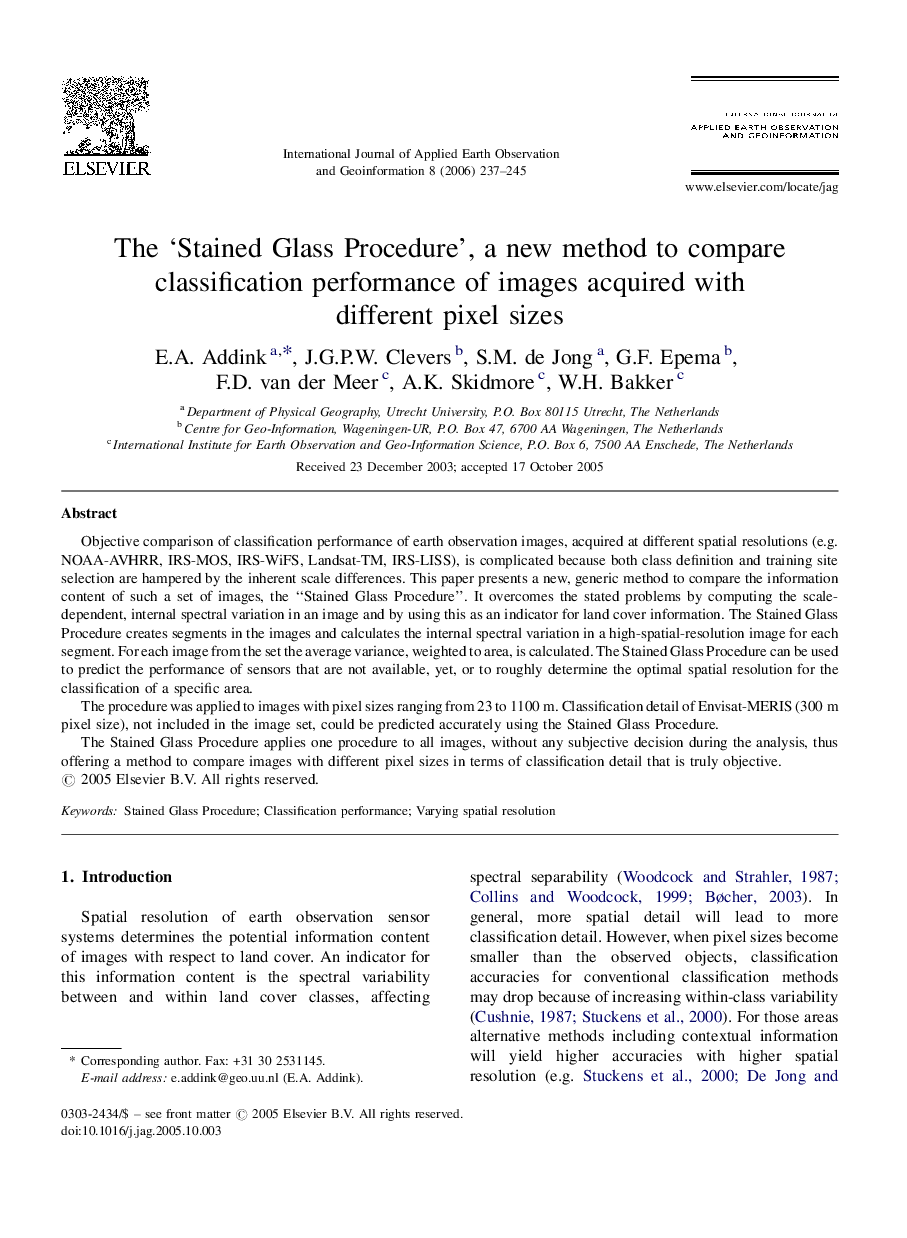| Article ID | Journal | Published Year | Pages | File Type |
|---|---|---|---|---|
| 4465486 | International Journal of Applied Earth Observation and Geoinformation | 2006 | 9 Pages |
Objective comparison of classification performance of earth observation images, acquired at different spatial resolutions (e.g. NOAA-AVHRR, IRS-MOS, IRS-WiFS, Landsat-TM, IRS-LISS), is complicated because both class definition and training site selection are hampered by the inherent scale differences. This paper presents a new, generic method to compare the information content of such a set of images, the “Stained Glass Procedure”. It overcomes the stated problems by computing the scale-dependent, internal spectral variation in an image and by using this as an indicator for land cover information. The Stained Glass Procedure creates segments in the images and calculates the internal spectral variation in a high-spatial-resolution image for each segment. For each image from the set the average variance, weighted to area, is calculated. The Stained Glass Procedure can be used to predict the performance of sensors that are not available, yet, or to roughly determine the optimal spatial resolution for the classification of a specific area.The procedure was applied to images with pixel sizes ranging from 23 to 1100 m. Classification detail of Envisat-MERIS (300 m pixel size), not included in the image set, could be predicted accurately using the Stained Glass Procedure.The Stained Glass Procedure applies one procedure to all images, without any subjective decision during the analysis, thus offering a method to compare images with different pixel sizes in terms of classification detail that is truly objective.
